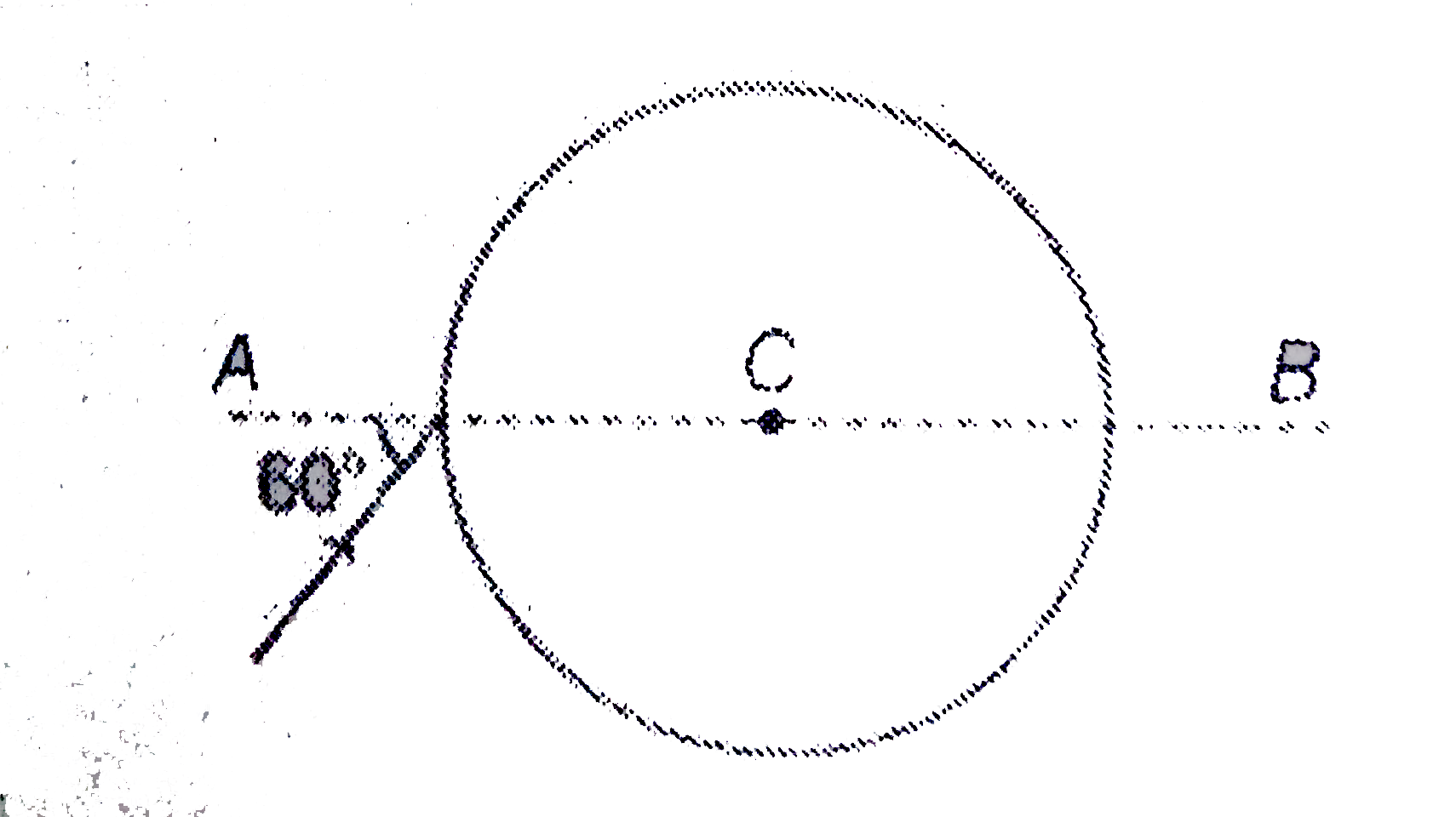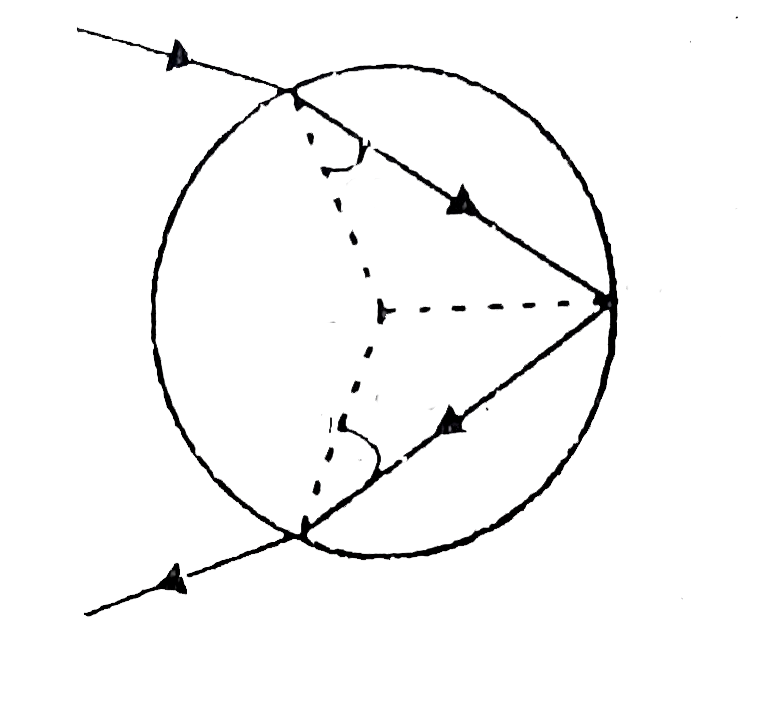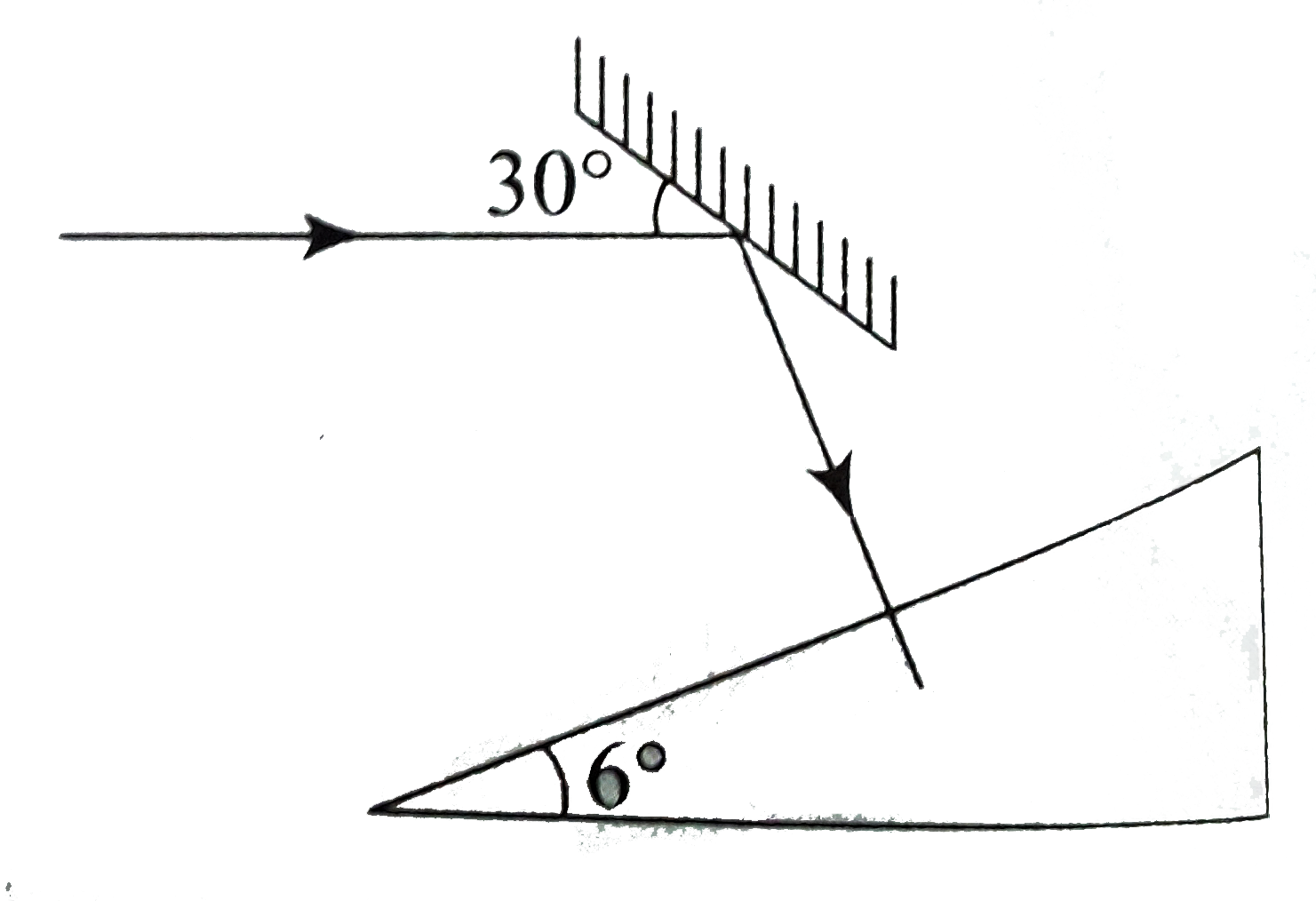A ray is incident on a glass sphere as shown.The opposite surface of the sphere is partially silvered .If the net deviation of the ray transmitted at the partially silvered surface is 1/3rdof the net deviation suffered by the ray reflected at the partially silvered surface(after emerging out of the sphere).Find the refractive index of the sphere.

The correct Answer is:√3

for refracted rays
δ1=60∘−θ(Clock Wise)
δ3=60∘−θ(Clock Wise)
for reflated ray
δ2=180∘−2θ(Clock Wise)
δnet=δ1+δ2+δ3
δnet=(60∘−θ)+(180∘−2θ)+(60∘−θ)
δnet=300∘−4θ
For transmitted ray
δnet=δ1+δ2
=2(60∘−θ)
Given thatδnet=13δnet
2(60∘−θ)=13(300∘−4θ)
360∘−6θ=300∘−4θ
2θ=60∘
θ=30∘
Applying Snell's law at first surface
1×sin60∘=μsin30∘
μ=√3
Similar Questions
A light ray is incident on a glass sphere at an angle of incidence 60∘ as shown. Find the angles r, r', e and the total deviation after two refractions.

View SolutionA ray of light falls on a transparent sphere with centre at C as shown in figure. The ray emerges from the sphere parallel to line AB. The refractive index of the sphere is

View Solution
Knowledge Check
A light ray is incident on a glass slab, it is partially reflected and partially transmitted. Then the reflected ray is
ACompletely polarised and highly intenseBPartially polarised and poorly intenseCPartially polarised and highly intenseDCompletely polarised and poorly intenseA parallel beam of light emerges from the opposite surface of the sphere when a point source of light lies at the surface of the sphere. The refractive index of the sphere is
A32B53C2D52A parallel beam of light emerges from the opposite surface of the sphere when a point source of light lies at the surface of the sphere. The refractive index of the sphere is
A32B53C2D52
A light ray is incident on a glass sphere at an angle of incidence 60∘ as shown. Find the angles r,f1,e and the total deviation after two refractions.

View Solution
A ray is incident on a sphere of refractive index √2 as shown in figure. Angle of refraction of the ray inside sphere is 30∘ if total deviation suffered by the ray is 30x0, then find x.
View SolutionA ray of light falls on a transparent sphere with centre at C as shown in figure. The ray emerges from the sphere parallel to line AB. The refractive index of the sphere is

View SolutionFind the net deviation produced in the incident ray for the optical instrument shown in figure. (Take refractive index of the prism material as 2.)

View SolutionA point source of light is kept on the surface of a sphere and it is found that parallel light rays emerge from the other side of the sphere. What is refractive index of material of the sphere ?
View Solution
